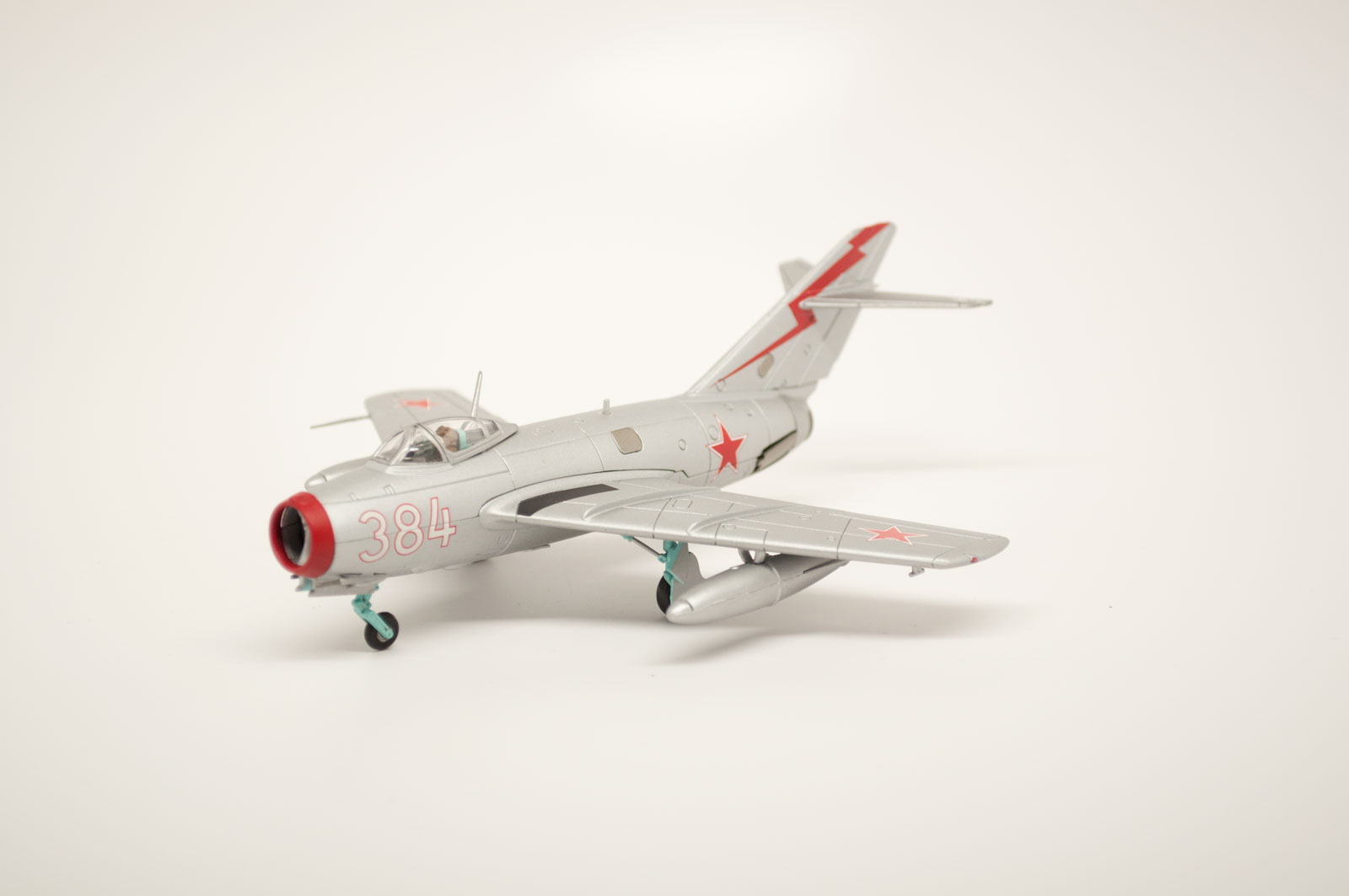Text..СССР
Mig-19 FARMER
The Mikoyan-Gurevich MiG-19 is a Soviet second generation, single-seat, twinjet fighter aircraft and was the world's first mass-produced supersonic aircraft. It was the first Soviet production aircraft capable of supersonic speeds in level flight.
In 1950 the Mikoyan-Gurevich design bureau began work on a new fighter aircraft, intended to have a greater range than the existing MiG-15 and MiG-17 aircraft, and capable of reaching supersonic speeds in level flight. The design bureau chose to use two of the new Mikulin AM-5 axial jet engines for its new fighter.
The Mig-19 was flown was flown for the first time on 24 May 1952, with test pilot G. A. Sedov at the aircraft's controls.
With the un-reheated AM-5A engines, the SM-2 could not exceed the speed of sound in level flight, so reheated AM-5F engines were substituted. While the new engines improved performance, the aircraft was found to have handling problems, particularly at high angles of attack, where the aircraft was prone to spinning. To solve these problems the aircraft's horizontal tail was lowered, with other changes including moving the aircraft's airbrakes and deepening the wing fences.
The AM-5F still generated inadequate thrust and so the Mikulin engine design bureau developed a new engine to replace it, the AM-9B (later re-designed the Tumansky RD-9), rated at 25.5 kN (5,700 lbf) dry and 31.87 kN (7,160 lbf) with reheat. When fitted with the new engines, the SM-2B became the SM-9, first flying in this form on 5 January 1954. The SM-9's performance impressed the Soviet authorities, and it was ordered into production as the MiG-19 on 17 February 1954, despite the fact that factory testing had only just started.
The rush to get the MiG-19 into service resulted in initial production aircraft having a number of serious problems. The type suffered a number of in-flight explosions, eventually traced to poor insulation between the aircraft's engines and fuel tanks in the rear fuselage - overheating of these tanks could cause fuel explosions. This was eventually partly solved by fitting a metal heat shield between the engines and the tanks. The aircraft's elevators proved ineffective at supersonic speeds, and an all-moving slab tail was tested by the second and third SM-9 prototypes, and later included in the major production type, the MiG-19S, which also featured an improved armament.
Deliveries of the new fighter to the Soviet Air Forces (VVS) began in June 1955, with the type being publicly unveiled on 3 July that year, when 48 MiG-19s took part in a flypast during an airshow at Tushino Airfield, Moscow.
During their service with Soviet Anti-Air Defense and in East Germany, MiG-19s were involved in multiple interceptions of Western reconnaissance aircraft. The first documented encounter with a Lockheed U-2 took place in the autumn of 1957. The MiG-19 pilot reported seeing the aircraft, but could not make up the 3,000 m (9,800 ft) difference in altitude. When Francis Gary Powers's U-2 was shot down in the 1960 incident, one pursuing MiG-19P was also hit by the salvo of S-75 Dvina (SA-2 Guideline) missiles, killing the pilot Sergei Safronov. In a highly controversial incident, on 1 July 1960, a MiG-19 shot down an RB-47H reconnaissance aircraft in international airspace over the Arctic Circle with four of the crew killed and two captured by the Soviets (they were released in 1961). In another incident, on 28 January 1964, a MiG-19 shot down a T-39 Sabreliner which had strayed into East German airspace while on a training mission; all three crewmembers were killed.
General characteristics of Mig-19S
Crew: 1
Length: 12.54 m (41 ft 2 in) with pitot probe retracted; 14.64 m (48.0 ft) with pitot probe extended
Wingspan: 9 m (29 ft 6 in)
Height: 3.88 m (12 ft 9 in)
Empty weight: 5,172 kg (11,402 lb)
Gross weight: 7,560 kg (16,667 lb)
Max takeoff weight: 8,832 kg (19,471 lb) with 2 × 760 L (170 imp gal; 200 US gal) drop tanks and two rocket pods
Fuel capacity: 1,800 L (480 US gal; 400 imp gal) internal
Powerplant: 2 × Tumansky RD-9B afterburning turbojet engines, 25.5 kN (5,700 lbf) thrust each dry, 31.8 kN (7,100 lbf) with afterburner
Performance
Maximum speed: 1,452 km/h (902 mph, 784 kts) at 10,000 m (33,000 ft)
Maximum speed: Mach 1.35
Range: 1,390 km (860 mi, 750 nmi)
Ferry range: 2,200 km (1,400 mi, 1,200 nmi) with 2 × 760 L (200 US gal; 170 imp gal) drop tanks at 14,000 m (46,000 ft)
Service ceiling: 17,500 m (57,400 ft)
Rate of climb: 177.8 m/s (35,000 ft/min)
Armament
Guns: 3 × 30 mm Nudelman-Rikhter NR-30 autocannon (75 rounds for wing-root guns, 55 rounds for the fuselage gun)
Hardpoints: 4 pylons in total, 2 for drop fuel tanks only, 2 for weapons, with a capacity of up to 500 kg (1,100 lb) of stores , with provisions to carry combinations of:
Rockets: 2 × 32-round ORO-57K rocket pods (4 from 1957)
Bombs: 2 x FAB-250

